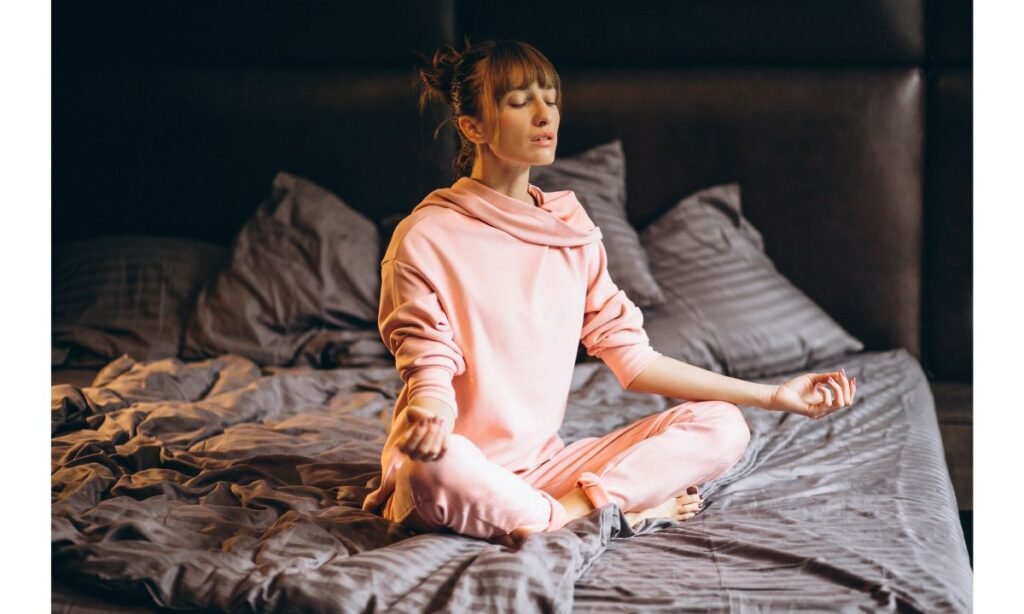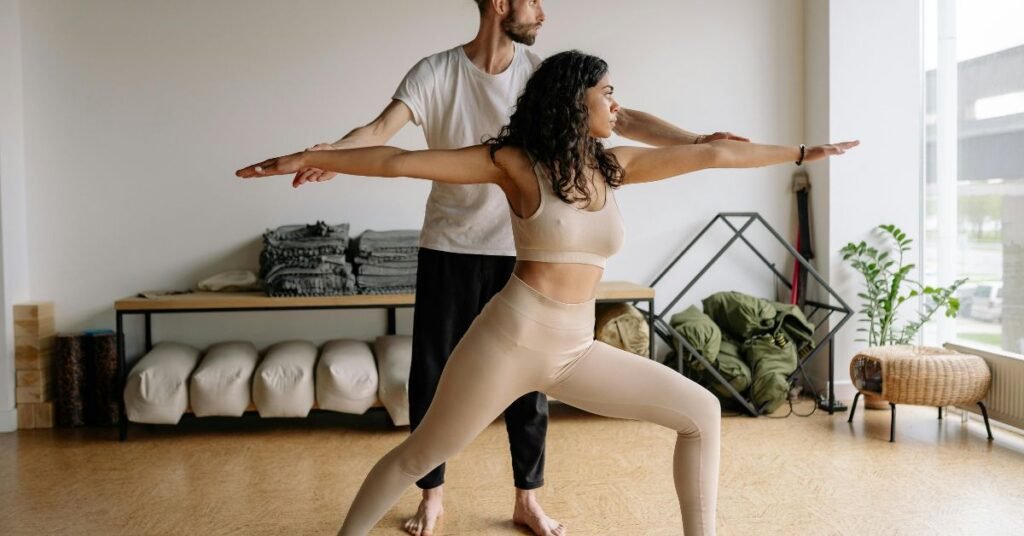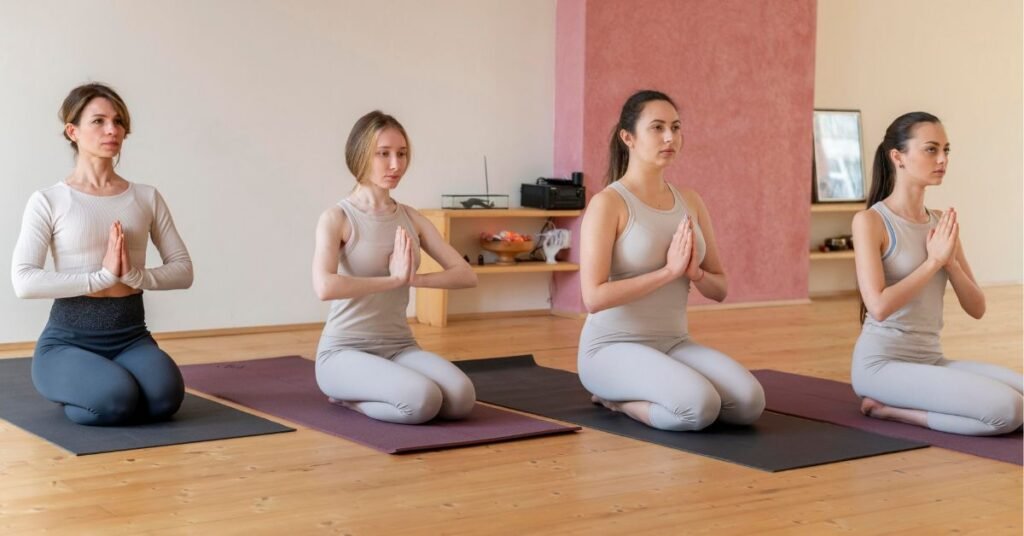Do you struggle to fall asleep at night or wake up feeling tired despite spending hours in bed? You’re not alone. In today’s fast-paced world, sleep issues have become a common concern. Fortunately, there’s a simple yet powerful solution to help you rest better—yoga.
But, does yoga really help you sleep? Can a few minutes of stretching and breathing truly transform your nights? In this blog post, we’ll explore how yoga promotes better sleep, what science says about it, and the best bedtime yoga routines to improve your rest. By the end, you’ll understand how incorporating yoga into your nighttime routine can make a difference.
Why Sleep Matters
Before we dive into how yoga can help, it’s important to understand just how critical sleep is for our overall health. Quality sleep impacts every aspect of our lives, from our mental clarity and mood to our physical health and immune system. A lack of good sleep can lead to a host of problems, including increased stress, poor decision-making, weakened immunity, and even chronic diseases like heart disease and diabetes.
Sadly, many of us aren’t getting enough sleep. According to the Centers for Disease Control and Prevention (CDC), about one-third of American adults don’t get enough rest. Stress, poor diet, excessive screen time, and a lack of exercise all contribute to sleep disturbances. That’s where yoga comes in.
Does Yoga Help You Sleep?
Yes, yoga can help you sleep better! Research shows that regular yoga practice can significantly improve sleep quality. In fact, several studies have found that yoga can enhance both the duration and depth of sleep.
A study published in the Journal of Clinical Sleep Medicine showed that participants who practiced yoga experienced improvements in sleep quality, better sleep duration, and fewer sleep disturbances than those who didn’t. Another research paper in the National Library of Medicine highlighted that yoga could be just as effective as other treatments for sleep disorders, like cognitive behavioral therapy.
So, how exactly does yoga help with sleep? Let’s break it down.
How Does Yoga Promote Better Sleep?
Yoga’s impact on sleep boils down to its ability to calm the nervous system, reduce stress, and promote relaxation—all essential factors for falling asleep. Here’s a closer look at how yoga works its magic:
1. Reduces Stress and Anxiety
One of the primary reasons people struggle with sleep is anxiety. When your mind is racing with thoughts and worries, it can be nearly impossible to relax and drift off. Yoga helps quiet the mind by encouraging mindfulness and breathing exercises, which promote a sense of calm and relaxation. By focusing on your breath and being present in the moment, yoga helps clear away the mental clutter that keeps you awake at night.
2. Calms the Nervous System
Yoga activates the parasympathetic nervous system, also known as the “rest and digest” system. This is the opposite of the sympathetic nervous system, which is responsible for the “fight or flight” response. When your body is in a state of heightened stress, it’s hard to unwind and sleep. Yoga helps shift your body into a more restful state, lowering heart rate and blood pressure, and making it easier for you to fall asleep.
3. Releases Tension in the Body
Physical tension, especially in the neck, shoulders, and back, is a common issue that can interfere with sleep. Many of us hold tension in our bodies throughout the day, whether it’s from poor posture, stress, or physical activity. Yoga incorporates gentle stretches that target areas of tension and help release tight muscles. By relaxing the body, yoga creates a more comfortable physical environment for sleep.
4. Balances Hormones
Yoga can help regulate hormone levels that affect sleep, such as cortisol (the stress hormone) and melatonin (the sleep hormone). Studies show that yoga can lower cortisol levels, helping to reduce stress. Additionally, some yoga practices—especially those involving relaxation techniques like pranayama (breath control)—can stimulate the production of melatonin, making it easier to fall asleep and stay asleep.
5. Improves Circulation
Good circulation is vital for quality sleep. Yoga helps improve blood flow throughout the body, including to the brain. Better circulation can lead to more restful sleep and a quicker transition into deep sleep stages.
Readmore: Half Boat Pose (Ardha Navasana)
Readmore: How to Do Side Lunge Pose (Skandasana)
Bedtime Yoga for Better Sleep
Now that you know how yoga can improve your sleep, let’s look at some practical bedtime yoga poses you can try. These poses are designed to relax your body, calm your mind, and prepare you for a restful night.
1. Child’s Pose (Balasana)
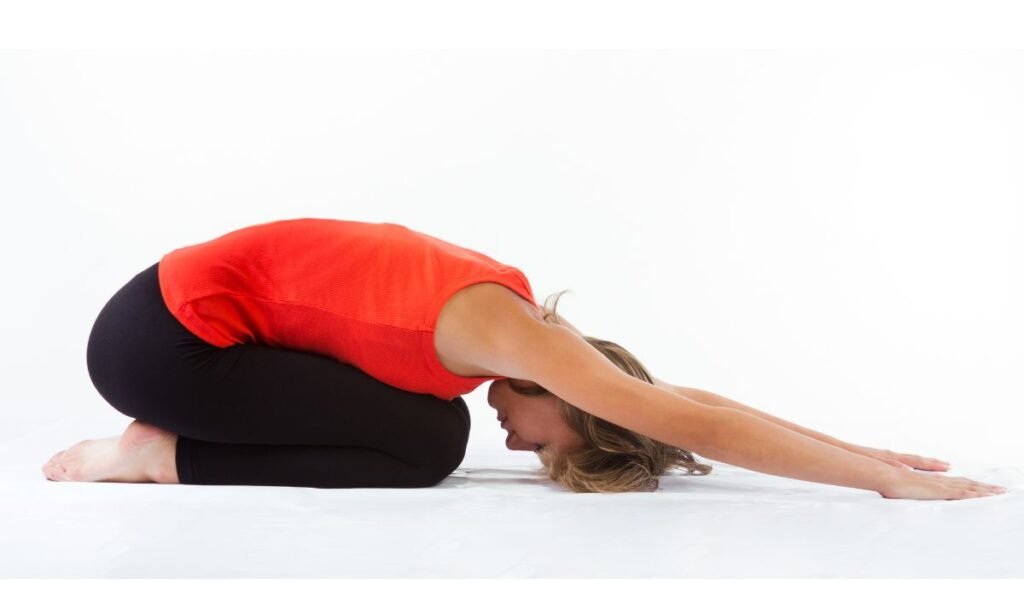
This gentle resting pose is perfect for relaxing your back and hips, while also calming the mind. Start by kneeling on the floor and slowly lower your forehead to the mat while extending your arms forward. Breathe deeply and allow your body to relax into the pose.
How to do it:
- Start on your hands and knees, with your knees spread wide apart.
- Sit back onto your heels and reach your arms forward, lowering your forehead to the mat.
- Relax your shoulders and breathe deeply for 1-3 minutes.
2. Legs Up the Wall (Viparita Karani)
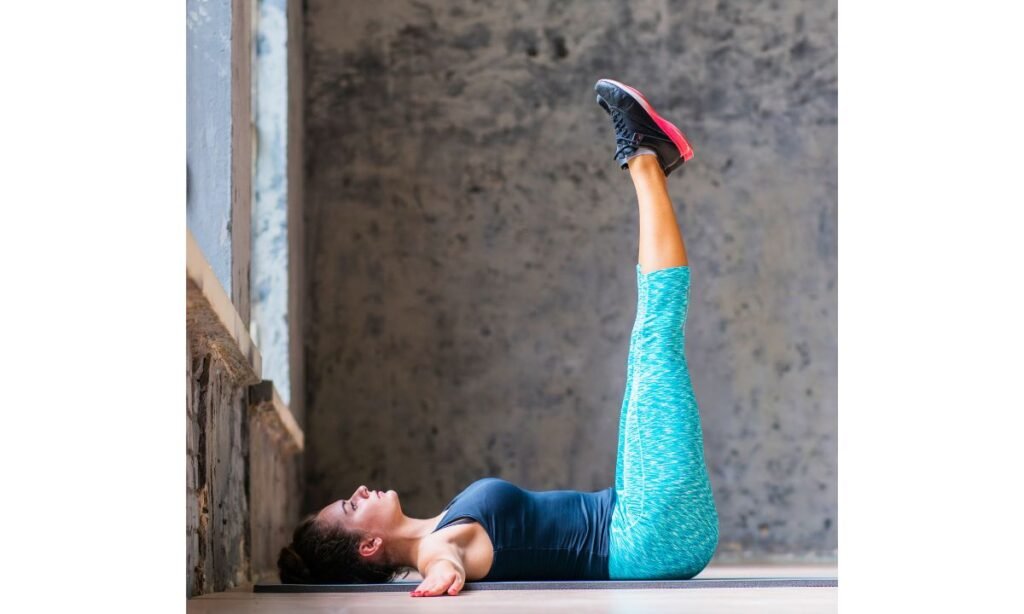
This pose helps calm the nervous system, relaxes the legs, and promotes deep relaxation. It’s especially effective for anyone who has been on their feet all day.
How to do it:
- Sit with your hip against a wall and lie down on your back.
- Swing your legs up the wall, keeping them straight and aligned with your hips.
- Relax your arms by your sides, close your eyes, and breathe deeply. Stay in the pose for 5-10 minutes.
3. Reclining Bound Angle Pose (Supta Baddha Konasana)
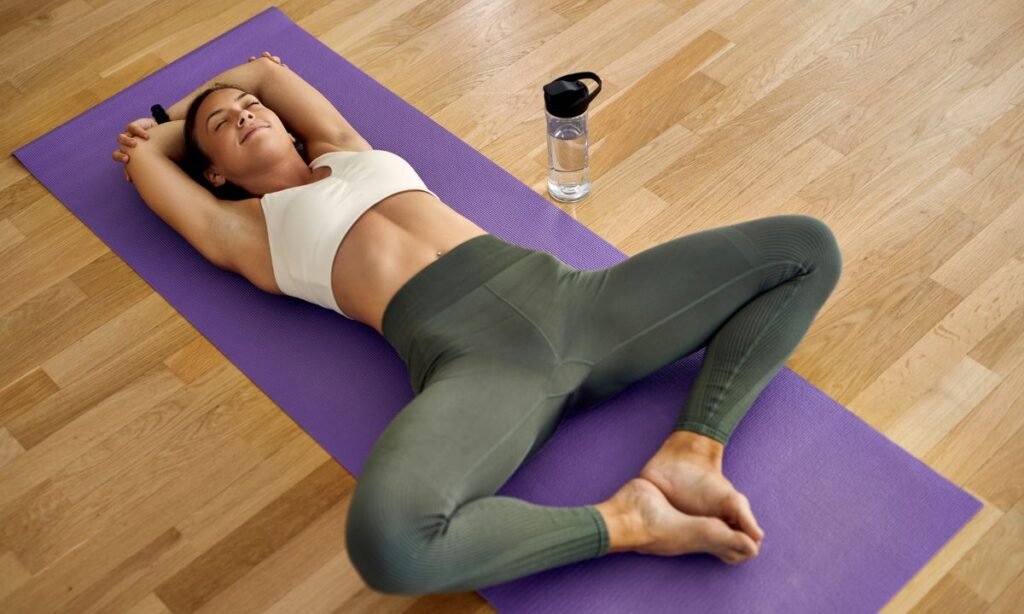
This restorative pose stretches the inner thighs and hips, while also encouraging deep breathing and relaxation.
How to do it:
- Lie on your back and bring the soles of your feet together, letting your knees fall open.
- Place your hands on your belly or by your sides.
- Close your eyes, relax your body, and focus on your breath. Stay here for 5-10 minutes.
Readmore: Unlock Squatting Garland Pose
Readmore: One-Legged King Pigeon Pose (Eka Pada Rajakapotasana)
4. Cat-Cow Pose (Marjaryasana-Bitilasana)
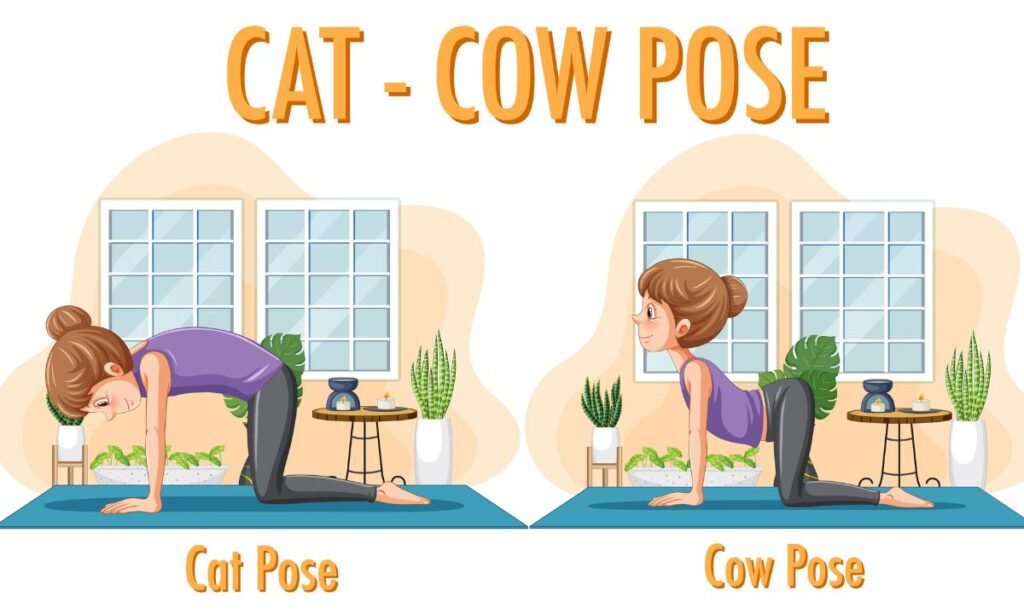
This dynamic movement helps release tension in the spine, shoulders, and neck, making it a great way to prepare your body for sleep.
How to do it:
- Start on your hands and knees with your wrists under your shoulders and knees under your hips.
- On an inhale, arch your back, lifting your head and tailbone toward the ceiling (Cow Pose).
- On an exhale, round your back, tucking your chin toward your chest (Cat Pose).
- Repeat for 5-10 breaths.
5. Seated Forward Fold (Paschimottanasana)
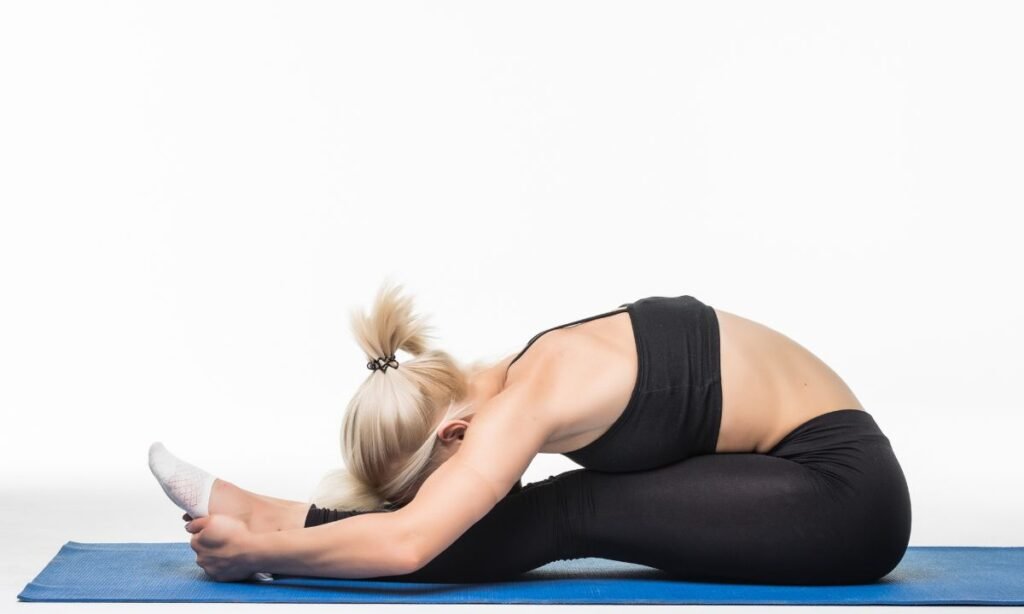
This calming stretch targets the lower back and hamstrings, helping release tension and encourage relaxation.
How to do it:
- Sit on the floor with your legs extended straight in front of you.
- Inhale and lengthen your spine, then exhale and slowly fold forward over your legs.
- Relax your neck and head, and hold for 1-3 minutes while breathing deeply.
6. Savasana (Corpse Pose)
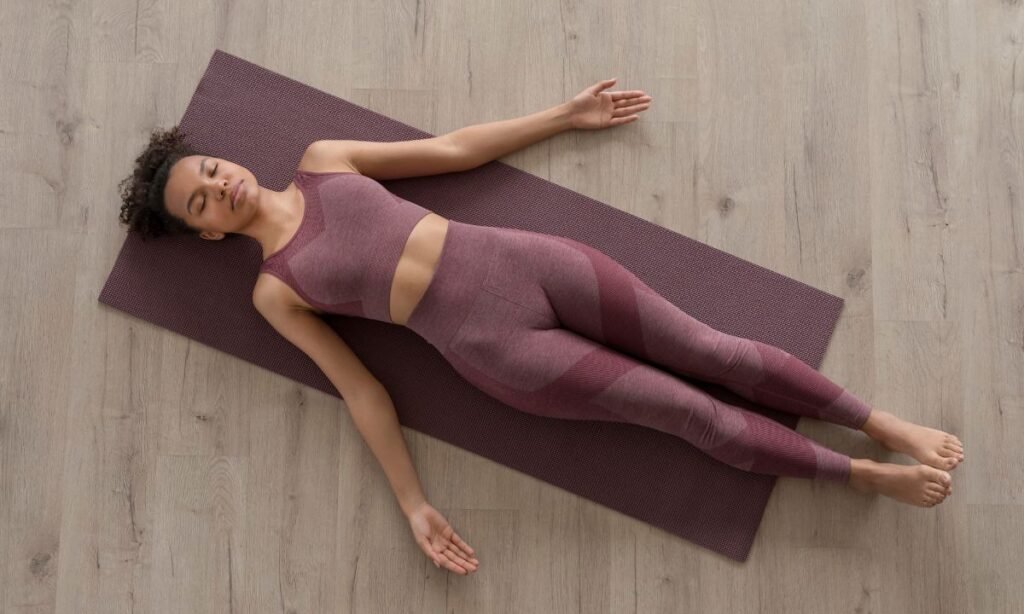
The ultimate relaxation pose, Savasana is perfect for winding down after your bedtime yoga practice. It allows you to let go of any remaining tension in your body and fully relax your mind.
How to do it:
- Lie on your back with your arms by your sides and your palms facing up.
- Close your eyes, breathe deeply, and allow your body to relax completely.
- Stay in the pose for 5-10 minutes.
Tips for a Successful Bedtime Yoga Routine
To make the most of your bedtime yoga practice, keep these tips in mind:
- Set a consistent routine: Try to practice yoga at the same time each night to help signal to your body that it’s time to wind down.
- Create a calming environment: Dim the lights, use calming scents (like lavender), and ensure your room is quiet and comfortable.
- Avoid screens before bed: The blue light from phones, tablets, and computers can interfere with your ability to fall asleep. Aim to unplug at least 30 minutes before your yoga practice.
- Be gentle with yourself: Don’t push yourself too hard during your bedtime yoga session. Focus on relaxation rather than intensity.
Final Thoughts
Yoga is more than just a form of exercise; it’s a holistic practice that can transform your sleep and overall well-being. By incorporating a few simple bedtime yoga poses into your routine, you can experience deeper, more restful sleep and wake up feeling refreshed and energized.
So, the next time you’re tossing and turning at night, consider rolling out your yoga mat. With just a few minutes of gentle stretching and breathing, you’ll be well on your way to a more peaceful night’s rest. Sweet dreams!
Readmore: Halfway Lift Pose (Ardha Uttanasana)
Readmore: King Arthur’s Yoga Pose: Easy Steps, Benefits & Tips
FAQs
- Does Yoga Help You Sleep?
Yes, yoga can improve sleep by reducing stress, calming the nervous system, and promoting relaxation. - How Does Yoga Promote Better Sleep?
Yoga helps lower cortisol levels, release physical tension, and activate the parasympathetic nervous system, making it easier to fall asleep. - What is Bedtime Yoga for Better Sleep?
Bedtime yoga involves gentle stretches and breathing exercises done before sleep to help relax the body and mind, promoting a restful night’s sleep.

Sonu is a passionate yoga teacher with over 6+ years of experience helping individuals find balance, strength, and inner peace through the transformative power of yoga. As the creator of Pure Yoga Vibes, Sonu shares expert insights, inspiring practices, and a wealth of knowledge to support your wellness journey. Dedicated to creating a space for growth and mindfulness, Sonu’s mission is to make yoga accessible and enjoyable for everyone. For inquiries or collaborations, feel free to reach out at contact@pureyogavibes.com.
